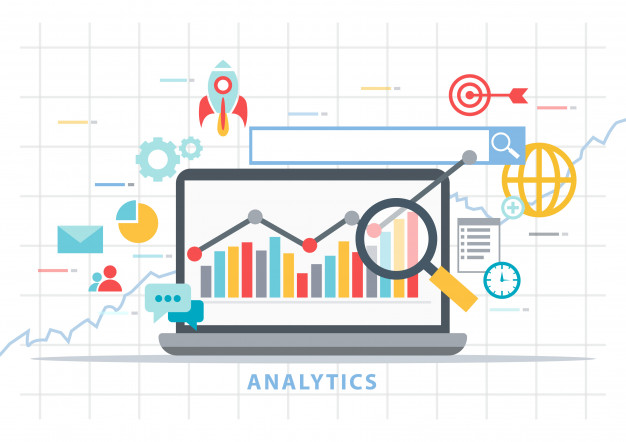Website Analysis & Reporting
Even companies that do not engage in ecommerce benefit from an effective website since customers often find businesses through Internet searching. Companies may perform a website analysis for numerous reasons. For instance, they may want to know how well their website functions or they may need to examine what competitors do with Web pages. An analysis can even help determine the layout of the site before one is created. A good website analysis explains how well the site supports the company's goals.
(2).png)
What is a web analytics dashboard?
A web analytics dashboard is a reporting interface that allows you to monitor your website performance by tracking metrics like visitors, pageviews, and online conversions.
Web analytics software is an important tool for webmasters, as it allows them to collect, measure, and analyze data for their website. Webmasters will install this software on their website to automate data collection. The most popular web analytics software is Google Analytics. It’s free, easy-to-use, customizable, and powerful.
A web analytics dashboard may be used in many different contexts such as digital marketing, social media, SEO, UX, and ecommerce. Each of these use-cases brings a different perspective to website performance. For example, an SEO will want to ensure that his website is maintaining a healthy volume of search engine traffic, while an ecommerce professional will want to ensure online sales are high.
Top Web Analytics metrics for the KPI driven marketer
We believe that making a web site is not a onetime affair, it's a lifelong commitment. A website should be regularly updated with the latest about your company, brand, products & Services, News, Events, Awards, Locations & Contacts and anything else that might be relevant, geared to generate the maximum returns from your web site.
Talking about latest trends in Website Analysis & Reporting, the web space will be more occupied with:
- # Email leads created (Goal conversions)
- # Page views
- % New versus returning visitors
- % Referral traffic
- # Website visitors
- # New or unique visitors
- # Page views per visitor (Pages/Sessions)
- % Bounce rate
- % Conversion rate
- % Sources for incoming traffic
(3).png)
Why build a web analytics dashboard?
The benefit of a web analytics dashboard is that it allows your entire team to monitor your website performance. While many marketers and webmasters are quite proficient at using Google Analytics, others on your team may be unfamiliar with that tool. A web analytics dashboard provides a mechanism by which to share website insights in a concise, simple way.
You may want to consider building a web analytics dashboard if…
- You’re part of a large team that requires visibility into website performance
- You manage a website with a large number of monthly visitors
- You need to combine web analytics data with other sales and marketing data points to monitor your performance
- You want to simplify monitoring common metrics and scenarios without exploring a tool like Google Analytics
How to create a web analytics dashboard
A web analytics dashboard is built by pulling data from your website into a dashboard tool and using that data to create graphical representations. Here’s a simple checklist to use when creating a web analytics dashboard:
- Identify the web analytics metrics and KPIs you need to monitor
- Identify where that data currently resides (EG: Google Analytics, Adobe Analytics)
- Determine how you want to view your dashboard (EG: TV dashboard, mobile dashboard)
- Evaluate a dashboard software vendor based on your requirements
- Pull data from your data services into the dashboard
- Design and build graphical visualizations for your dashboard
- Share the dashboard with your team to encourage adoption

// Drop us a line! We are here to answer your questions 24/7
